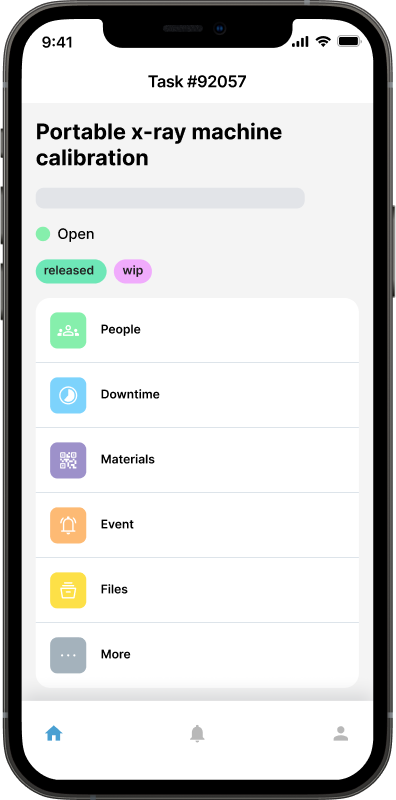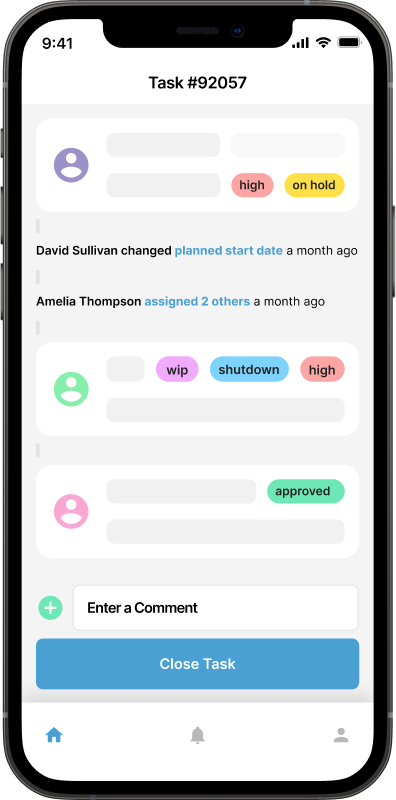What is Fixed Asset Management?

Property, Plant and Equipment
Fixed asset management refers to the process of tracking, monitoring, and maintaining a company's physical assets throughout their lifecycle. Fixed assets, also known as property, plant, and equipment (PP&E), include items such as buildings, machinery, vehicles, furniture, and land that are essential for business operations and are expected to provide long-term value.
Effective fixed asset management is crucial for organizations to optimize resource allocation, reduce costs, ensure regulatory compliance, and make informed decisions about capital investments. Here we explore the fundamental elements of the maintenance of fixed assets:

Asset Identification
Fixed asset identification goes beyond simple labeling. Organizations should develop a comprehensive classification system that groups assets by type, location, department, and function. A well-structured identification system includes physical tagging methods (QR codes, barcodes, RFID), detailed asset descriptions, manufacturer specifications, and model numbers. The system should also capture critical information such as warranty periods, expected lifespan, and maintenance requirements. This foundation enables efficient tracking and management throughout the asset's lifecycle while supporting accurate financial reporting and regulatory compliance.
Asset Acquisition
The acquisition process requires careful documentation and strategic planning. Beyond basic purchase details, organizations should document the business justification for the acquisition, conduct cost-benefit analyses, and consider total ownership costs including installation, training, and ongoing maintenance. The acquisition record should include funding sources, depreciation methods to be applied, insurance requirements, and any special handling or storage needs. Organizations should also establish procurement policies that ensure competitive pricing, quality standards, and vendor evaluation criteria. Integration with budget planning and capital expenditure forecasting is essential for optimal resource allocation.
Asset Tracking
Modern asset tracking extends well beyond basic location monitoring. A comprehensive tracking system should monitor asset utilization rates, maintenance history, performance metrics, and compliance with safety regulations. Real-time tracking capabilities can help prevent unauthorized movement or use of assets while providing valuable data on asset utilization patterns. Advanced tracking systems can integrate with maintenance management software to automatically trigger service requests based on usage patterns or predetermined thresholds. This integration supports proactive maintenance planning and helps prevent unexpected downtime.
Depreciation and Valuation
Effective depreciation and valuation strategies require regular review and adjustment based on changing market conditions and asset performance. Organizations should consider multiple depreciation methods and select the most appropriate one based on the asset type, industry standards, and tax implications. Regular revaluation helps identify impairment issues early and ensures accurate financial reporting. The valuation process should consider factors such as technological obsolescence, market demand, and replacement costs. This information supports better decision-making regarding asset replacement, upgrades, or disposal.
Maintenance and Repairs
A strategic maintenance program balances preventive and corrective maintenance to optimize asset performance and longevity. Organizations should develop maintenance schedules based on manufacturer recommendations, usage patterns, and historical performance data. The maintenance strategy should include emergency response procedures, spare parts inventory management, and vendor management for specialized repairs. Cost tracking for maintenance activities helps identify assets with excessive maintenance requirements and supports decisions about replacement or upgrade. Training programs for maintenance staff and documentation of maintenance procedures ensure consistent quality of work.
Disposal and Retirement
Asset disposal requires careful planning to maximize recovery value while ensuring environmental compliance. Organizations should develop disposal policies that consider environmental impact, data security (for IT assets), and potential tax implications. The disposal process should include procedures for assessing residual value, exploring resale opportunities, and documenting the disposal method chosen. Organizations should also consider the timing of disposals to optimize tax benefits and align with capital investment plans. Proper documentation of disposal decisions and methods is crucial for audit trails and regulatory compliance.
Regulatory Compliance and Reporting

Maintaining compliance requires staying current with changing regulations across multiple jurisdictions. Organizations should establish procedures for regular review of compliance requirements and updates to reporting methods as needed. This includes maintaining detailed documentation of asset-related decisions, periodic internal audits, and regular training for staff involved in asset management. Automated compliance tracking and reporting tools can help reduce errors and ensure timely submission of required reports. Integration with risk management systems helps identify and address potential compliance issues proactively.
Data Analysis and Decision Making
Advanced analytics can transform asset data into actionable insights for strategic planning. Organizations should develop key performance indicators (KPIs) for asset management and regularly analyze trends in asset utilization, maintenance costs, and performance metrics. Predictive analytics can help forecast maintenance needs and optimal replacement timing. Analysis should also consider the impact of asset management decisions on broader organizational goals such as sustainability initiatives or operational efficiency targets. Regular review of analysis results with stakeholders ensures that insights are translated into effective action plans.
Software and Automation
Implementing asset management software requires careful consideration of organizational needs and integration requirements. The software should support mobile access for field personnel, automated workflow management for maintenance requests, and robust reporting capabilities. Integration with other business systems ensures consistent data across the organization and supports comprehensive decision-making. Organizations should also consider scalability, user training requirements, and data security features when selecting software solutions. Regular evaluation of software performance and updates ensures the system continues to meet evolving organizational needs.
By effectively managing fixed assets, companies can ensure the efficient utilization of resources, minimize risks, comply with regulations, and make informed decisions about asset acquisition, maintenance, and disposal. It enables organizations to have a clear understanding of their asset portfolio, its value, and its impact on their financial health and operational efficiency.

